Navigating the Currents: A Deep Dive into the Cautious Iron Ore Market
Welcome to our comprehensive analysis of the global iron ore market. This vital commodity, the backbone of the steel industry, is currently navigating a complex landscape shaped by evolving demand patterns, steady supply, and significant structural shifts like decarbonization. Understanding these dynamics is crucial for anyone involved in trading or investing, whether you are a novice exploring the fundamentals or a seasoned trader seeking deeper technical insights.
For months, the market has presented a picture of relative calm, characterized by limited price volatility. But what lies beneath this surface stability? Is this equilibrium sustainable, or are subtle forces at play that could signal future shifts? In this discussion, we will unpack the key drivers, dissect the latest data, and explore what various indicators might be telling us about the path ahead for iron ore prices.
Join us as we explore the intricate relationship between supply and demand, the profound influence of China’s economic policies and property sector, the growing importance of sustainability, and the critical metrics you should monitor to stay ahead in this essential market.
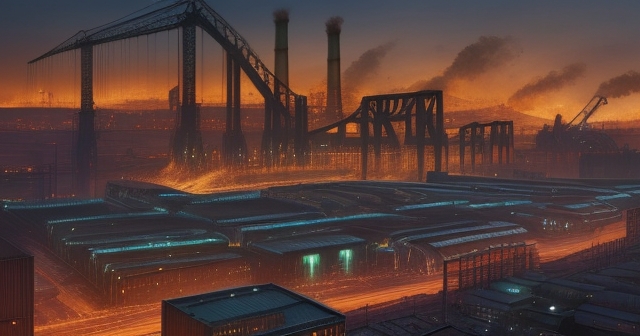
The Current Price Equilibrium: Calm Before the Storm?
Looking at recent price action, the global iron ore market has settled into a period of consolidation. Prices for the benchmark 62% Fe fines CFR China have hovered within a relatively narrow band, generally between $97 and $107 per tonne in late April and early May 2025. This stability contrasts with the more significant declines observed earlier in the year, where prices had dropped considerably from their start-of-year levels (e.g., a substantial ~21.45% fall from the start of 2024 to early May 2025, and about a ~5.23% dip from January 2025). This suggests the market found a temporary point of balance.
Futures markets, such as those on the Dalian Commodity Exchange (DCE), have also reflected this cautious sentiment. Trading ranges have been tight, indicating that neither bulls nor bears currently possess overwhelming conviction to push prices decisively in one direction. This kind of muted volatility is often a sign of a market waiting for a clearer signal, perhaps from fundamental data, policy announcements, or significant shifts in physical trade flows.
Interestingly, beneath this surface calm, there have been regional price disparities within China itself. Reports from East China, for instance, have sometimes indicated tightening physical inventories and slight premiums, potentially linked to infrastructure projects or specific local mill requirements. Conversely, South China has occasionally reported oversupply, perhaps due to concentrated cargo arrivals. These regional differences, while not dictating the overall market trend, can offer early clues about localized supply/demand pressures and potential arbitrage opportunities for those with the infrastructure to capitalize on them. They remind us that the “China market” is not monolithic but a collection of interconnected regional dynamics.
| Indicator | Current Value | Implication |
|---|---|---|
| Iron Ore Prices | $97 – $107 per tonne | Stable but cautious market |
| Blast Furnace Utilization | 82.3% | Indicates consistent steel production |
| Chinese Port Stockpiles | 138 million metric tons | Critical health indicator of market |
Deconstructing China’s Demand Dynamics: Beyond the Headline Numbers
China, as the world’s largest steel producer and iron ore consumer, holds unparalleled sway over market dynamics. Understanding Chinese demand is paramount. While headline economic data like the 5.3% GDP growth in Q1 2025 might appear supportive on the surface, the ferrous market reaction has been notably subdued compared to historical responses to strong growth figures. This suggests that market participants are looking beyond the aggregate numbers and focusing on specific sectoral weaknesses.
One of the most significant shifts we’ve observed is in the procurement strategy of Chinese steel mills. Rather than engaging in aggressive restocking campaigns, which were common in previous cycles, mills have largely adopted a “just-in-time” (JIT) approach. This means they are purchasing raw materials, including iron ore, only as needed for immediate or near-term production requirements, keeping inventories lean. Why this change? Primarily due to persistent pressure on steelmaking margins. Weak profitability discourages mills from tying up capital in large, potentially depreciating raw material stockpiles.
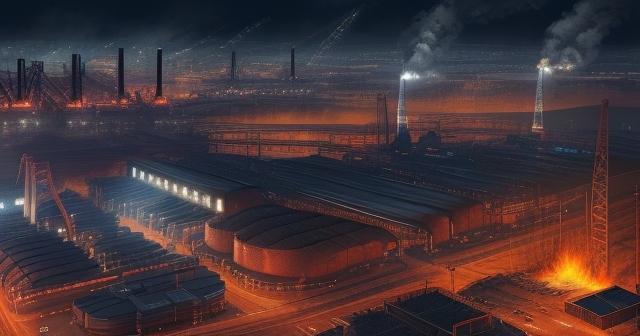
This shift is clearly reflected in inventory data. Average mill inventories have decreased significantly, dropping from levels around 35 days of consumption in early March to roughly 28 days of consumption more recently. This tighter inventory management by mills acts as a natural brake on demand-side impulses that could otherwise push prices higher. Even with stable blast furnace utilization rates hovering around 82.3% – a level sufficient for current steel output – the lack of a desire to accumulate large stocks limits upward price momentum stemming from production needs alone.
The Property Puzzle: A Persistent Drag on Steel and Ore
While China’s overall GDP growth provides some foundational support, the Achilles’ heel for steel and iron ore demand remains the struggling property sector. This sector has historically been the single largest consumer of steel in China, driving demand for products like rebar and structural steel. The latest data continues to paint a grim picture.
Real estate investment in China has seen significant declines, registered at -10.1% in the first nine months of 2024. Even more impactful for future steel demand is the sharp contraction in new construction starts, which fell by a staggering -22.2% over the same period. These figures are not just statistics; they represent millions of square meters of building space that simply are not being built, directly translating into reduced requirements for steel, and subsequently, for the iron ore needed to produce that steel.
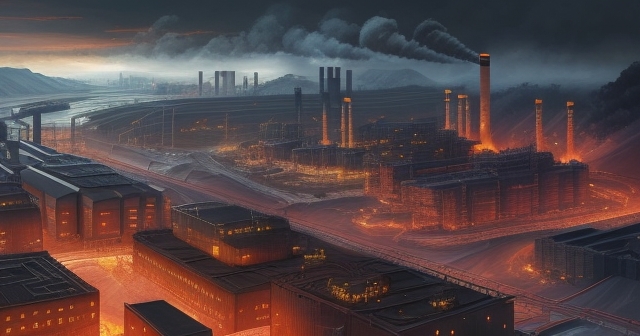
Despite various government efforts to stabilize the property market, including measures to support developers and encourage home buying, the sector has yet to show convincing signs of a sustained recovery. This persistent weakness creates a significant structural headwind for iron ore demand. While infrastructure spending and manufacturing activity provide some counterbalance, they have not been sufficient to offset the drag from property. Any meaningful upside for iron ore prices linked to a resurgence in Chinese demand is heavily dependent on a material improvement in this crucial sector, which currently appears unlikely in the short term.
Shifting Sands in Procurement: From Stockpiling to Just-in-Time
Let’s delve a bit deeper into the operational shift at Chinese steel mills. The move towards a “just-in-time” (JIT) inventory strategy is more than just a minor adjustment; it fundamentally alters the market’s sensitivity to supply disruptions and changes in demand perception. In previous years, mills would build substantial raw material reserves ahead of anticipated demand surges (e.g., post-Lunar New Year) or as a hedge against potential supply issues. This behavior often created predictable seasonal patterns and amplified price rallies.
Now, armed with leaner inventories (down to around 28 days of consumption), mills are more reliant on consistent, smaller-volume arrivals at ports. This shifts the focus of purchasing activity towards the physical port stock market rather than large, long-term contracts. It also makes the market less resilient to unexpected disruptions, although conversely, it limits the fuel available for aggressive, speculative buying sprees.
| Aspect | Change | Impact |
|---|---|---|
| Inventory Levels | Decreased from 35 to 28 days | Natural brake on demands |
| Purchasing Strategy | Shifted to JIT | Relies on immediate availability |
| Utilization Rate | Stable at 82.3% | Consistent steel production |
The stability of blast furnace utilization rates, hovering around 82.3%, supports this JIT model. Mills are producing steel at a consistent pace that matches current demand, but they aren’t running furnaces at maximum capacity to build finished steel inventories, which would necessitate larger raw material stocks. This indicates a pragmatic, cost-conscious approach driven by the need to protect already thin profit margins in steel production. For iron ore suppliers and traders, this means the demand signal is now more granular, reactive, and focused on immediate availability at key ports like Qingdao and Tianjin.
The Supply Side Story: Steadiness Amidst Global Swings
While China’s demand side is undergoing significant changes, the global supply of iron ore has remained remarkably steady. Major producers in Australia and Brazil continue to operate efficiently, maintaining a consistent flow of material to the market. Australia, for instance, has been shipping around 16.5 million tonnes weekly, while Brazil’s output from giants like Vale remains robust despite occasional, temporary disruptions such as routine port maintenance (like the recent instance at Itaguai terminal). Other significant producers like India and South Africa also contribute, though their scale is smaller.
This fundamental steadiness in supply from the key mining regions provides a crucial balancing force in the market. It helps to absorb the current level of demand without creating artificial scarcity that could send prices soaring. For the equilibrium observed in early 2025 to persist, this consistency in supply will need to be maintained, avoiding major weather-related disruptions or operational setbacks that could impact the volumes reaching the market.
We should also keep an eye on potential shifts in supply strategy. While major miners are focused on volume and efficiency, the long-term market structure, particularly the increasing demand for higher-grade ores driven by decarbonization, might influence their investment decisions in the future. However, for the current period, the story from the supply side is largely one of reliable, consistent output meeting the market’s needs.
The Two-Tiered Market: High-Grade Ambitions Meet Cost Realities
One of the most fascinating structural developments in the iron ore market is the emergence of a two-tiered system. This is largely a consequence of the global push towards decarbonization and the steel industry’s efforts to reduce CO2 emissions. Producing “green steel” often involves processes that require higher-purity iron ore feedstocks.
Higher-grade ores (e.g., 65% Fe, 66% Fe, 67.5% Fe pellet feed) theoretically offer environmental benefits and operational efficiencies in blast furnaces, potentially reducing coke consumption and thus carbon emissions. However, the current economic reality for steel mills paints a different picture. With steelmaking margins under pressure, mills are prioritizing cost-effectiveness in their raw material purchases. This has led to waning spot market interest and narrower premiums for these higher-grade fines compared to the benchmark 62% Fe fines.
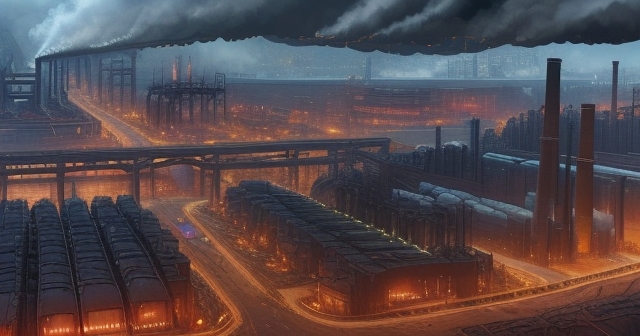
Similarly, demand for direct charge ores like lump and pellet, which typically command premiums due to their suitability for direct charging into blast furnaces without prior sintering (another process with emissions), has also decreased under current market conditions. Mills are opting for cheaper fines that require sintering because the cost savings on the raw material outweigh the benefits of using direct charge ores, especially when margins are thin. This trend is further amplified by the increasing traction of lower-grade Indian fines with wider discounts in China, which are putting additional pressure on low-grade Australian brands at ports.
This bifurcation highlights a key tension in the market: the long-term strategic imperative of decarbonization favoring high grades versus the immediate financial pressure driving demand for the most economical feedstock. It suggests that while the potential for a strong high-grade market exists, its full realization is dependent on a recovery in steelmaking profitability that allows mills to prioritize efficiency and environmental goals over immediate cost cutting.
Policy, Trade, and Macro: External Forces Shaping Iron Ore’s Path
Beyond the direct interplay of supply and demand, external factors significantly influence the iron ore market. Chinese government policies, in particular, are critical. The “special action plan for carbon reduction” is perhaps the most impactful long-term policy. By promoting electric-arc furnaces (EAFs) – which primarily use scrap steel – over traditional blast furnaces (which use iron ore and coking coal), this policy is expected to gradually shrink the demand for traditional raw materials over time. This creates a structural headwind for iron ore demand in the coming years.
While the property sector is a major drag, other policies related to infrastructure spending or potential targeted stimulus measures could provide intermittent support for steel demand. Market participants closely watch policy signals from Beijing, looking for cues on future construction or manufacturing activity.
| External Factor | Impact on Market |
|---|---|
| Government Policies | Structural headwind for demand |
| Global Trade Tensions | Potential reduction in steel production |
| Central Bank Policies | Influence on commodity prices |
Increasing global trade tensions and tariffs also play a role, albeit indirectly. For instance, new tariffs imposed by the US on Chinese steel exports could reduce the volume of steel leaving China. Since China produces steel primarily for domestic consumption, but also exports significant volumes, a reduction in exports due to tariffs would lead to lower overall steel production, and consequently, lower iron ore requirements. This adds another layer of complexity and potential downward pressure on demand.
Finally, broader macroeconomic factors, such as the monetary policies of major central banks (like the US Federal Reserve or the People’s Bank of China) and currency movements (like the DXY Index and the Yuan), can influence dollar-denominated commodity prices and the financial health of key industries. These global crosscurrents must be considered when analyzing the iron ore market outlook.
Key Indicators to Watch: Navigating the Data Signals
In a market characterized by caution and subtle shifts, monitoring key indicators becomes paramount for informed decision-making. What should you be paying closest attention to?
- Chinese Port Stockpiles: This is arguably the most critical immediate indicator of physical market health. Current levels are around 138 million metric tons. The 135 million ton threshold is often cited as a level that could trigger panic buying among mills needing to restock, although the shift to JIT might alter this dynamic. Watching the weekly changes in port stocks at major hubs like Qingdao is essential.
- Blast Furnace Utilization Rates: While stable at around 82.3% currently, significant upward or downward movements would signal a change in mill production intentions and thus raw material demand.
- Steel-to-Ore Spread: This metric reflects the profitability of steelmaking. A widening spread indicates healthier mill margins, potentially increasing their appetite for raw materials, including potentially higher-grade or direct charge ores. A narrowing spread reinforces the focus on cost-cutting and cheaper feedstocks.
- Mill Inventories: Tracking average days of consumption held by mills provides insight into their comfort levels and willingness to purchase. The recent decline to 28 days is a key data point reflecting the JIT strategy.
- Physical vs. Futures Price Gap: A widening gap, particularly backwardation (where nearby futures are cheaper than physical prices), can signal that the futures market anticipates lower prices ahead or that physical supply is temporarily tight relative to immediate demand. A notable 14 yuan backwardation was observed in late April 2025, historically preceding significant price corrections.
- Regional Price Differentials within China: As discussed, these localized variations can be early indicators of changing supply-demand balances in specific regions.
These indicators, when viewed collectively, offer a nuanced picture of the market’s underlying health and potential direction, helping us look beyond the seemingly static surface.
Technical Insights and Forecasts: Peering into the Future
Beyond fundamental analysis, technical analysis can provide valuable insights into market sentiment and potential price movements. While recent volatility has been low, charting historical price data can reveal support and resistance levels that traders watch closely. A price testing a historical support level, for example, might suggest a potential bounce, while resistance levels could signal points where upward momentum might stall.
Trend indicators, such as moving averages, can help confirm directional biases, even in a range-bound market. Oscillators like the RSI might indicate whether the market is currently overbought or oversold, though their signals can be less reliable during periods of low volatility. The key is to use technical analysis as a complementary tool to fundamental understanding, not in isolation.
Price forecasts from various institutions offer a glimpse into market expectations, although they should always be viewed with caution and an understanding of the underlying assumptions. Forecasts for 2025 range widely, with some anticipating prices around $96/tonne, while others project targets between $100-$126/tonne. Many analysts foresee potential for further price declines in the second half of 2025, heavily influenced by the trajectory of China’s property sector and the extent of any future policy support.
Consider also seasonal factors. The second quarter of the year typically sees a lull in demand in the Northern Hemisphere due to weather patterns and holiday periods, while miners in the Southern Hemisphere are often ramping up production. This can sometimes contribute to a softer price environment in May and June before potential restocking requirements emerge ahead of the traditional July-August construction season in China (if the property sector allows). Awareness of these potential seasonal influences adds another layer to your analysis.
Conclusion: Positioning Yourself in a Cautious Market
The global iron ore market currently finds itself in a state of cautious equilibrium. While supply remains steady, the complex and evolving demand picture in China, particularly the persistent weakness in the property sector and the shift to “just-in-time” mill procurement, limits significant upside potential in the short term. The structural push towards decarbonization is creating a fascinating, albeit currently cost-constrained, two-tiered market favoring higher grades.
For investors and traders, this environment demands vigilance and a nuanced understanding of the underlying drivers. Simply reacting to headline news or basic price movements is insufficient. We must closely monitor the key indicators discussed – Chinese port stockpiles, mill utilization and inventories, the steel-to-ore spread, and the physical-futures price relationship – for early signals of potential shifts in supply/demand balances.
While the immediate outlook points towards continued stability within a range, the potential for volatility remains, particularly if China’s property sector sees either a surprising recovery or further deterioration, or if global trade tensions escalate. Staying informed, understanding the interplay of fundamental factors, policy impacts, and technical signals, and exercising prudent risk management are essential for navigating this complex yet vital commodity market.
iron ore market analysisFAQ
Q:What are the key factors influencing the iron ore market?
A:The main factors include supply-demand dynamics, China’s economic policies, the global push for sustainability, and regional price disparities.
Q:How does China’s property sector affect iron ore demand?
A:The struggling property sector decreases demand for steel, which directly affects the demand for iron ore needed for steel production.
Q:What is the significance of the “just-in-time” procurement strategy?
A:It reduces inventory levels and increases reliance on immediate supply, thereby impacting the market’s sensitivity to price changes.
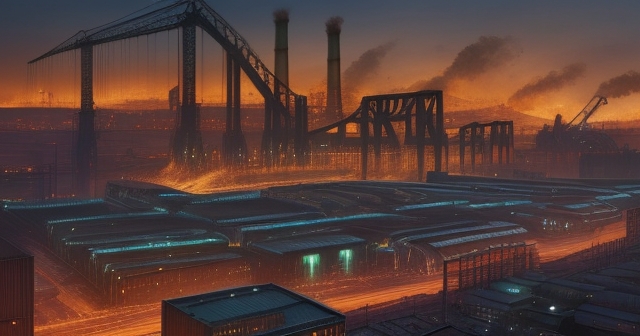
留言